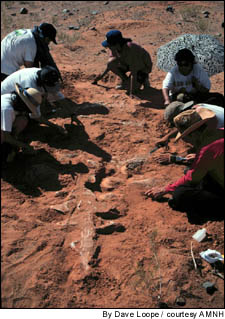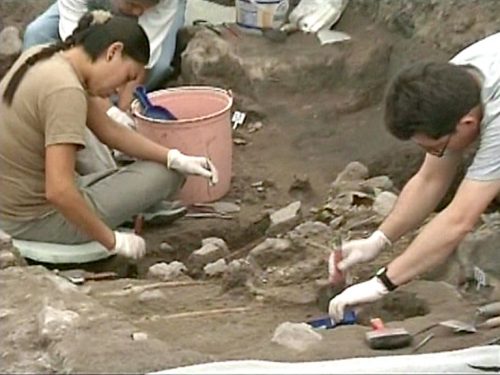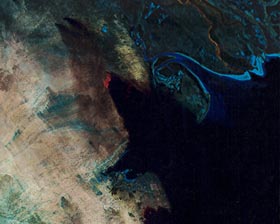
A crew excavates the remains of an ankylosaur — one of thousands of dinosaur fossils in Mongolia’s Gobi Desert. Тorrential rains in Mongolia’s Gobi Desert 75 million years ago triggered catastrophic sand slides that buried alive thousands of dinosaurs and other animals, creating one of the richest fossil sites on Earth.
How did the site come into being?
Research led by David Loope, a geoscientist at the University of Nebraska, shows that a thin, hard layer of sand formed one to two feet (0.3 to 0.6 meters) below the surface of the ancient dunes at Ukhaa Tolgod, Mongolia, setting the stage for sand slides.
“Seeing all of the bones and the structure of the sands that included them seemed to require a lot of sand in a hurry,” said Loope. “But that can’t happen unless something impeded the filtration of water.”
FORMATION OF A SLIDING SURFACE
Scientists believe that the Pacific Ocean was significantly warmer during the Late Cretaceous Period (75 million years ago) than it is today and spawned intermittent rainstorms that rolled across the Gobi Desert. Water from these storms seeped into the upper layer of the dunes.
As the water evaporated, it left behind dissolved minerals such as gypsum and calcite that created a thin, impermeable layer of sand that stabilized the dunes for thousands of years.
When subsequent storms rolled in, water accumulated in the upper layer of sand until it became so heavy that it slid off the cemented layer underneath. The resulting debris flows trapped any animals in their path like wet concrete, said Loope.
DESERT RAIN
Today, the Gobi Desert is one of the driest places on Earth, belying the fact that its climate once allowed plant and animal life to flourish. “The idea of a pole-to-pole balmy Cretaceous has been around for a while,” said Loope.
As evidence of the warmer, wetter climate, Loope cites fossils of cold-blooded animals such as crocodiles; burrows of freshwater crustaceans; and fossilized roots of plants that grew on the dunes.
SANDSTORM THEORY DISMISSED
Previous studies suggested that shifting sand during violent sandstorms at Ukhaa Tolgod buried the dinosaurs, lizards, and other animals alive. But when Loope went to Mongolia he noticed that the dunes showed no signs of violent winds like those in Utah and Arizona.
“The dunes move very, very slowly,” he said, “and animals just don’t killed by [slowly] migrating dunes.”
Loope’s sand slide theory developed when the researchers discovered fossils only in sandstone that was void of wind layers. Such sandstone is an indication of slide debris. Loope made the connection between the slide debris and the impermeable layer of sand. “Without that, you don’t have any fossils,” he said.






